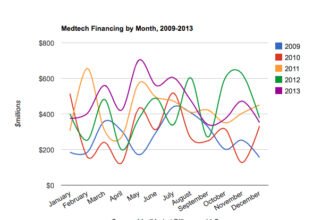I’ve written and presented recently on a number of “Do’s and Dont’s” around medical device integration, mobile health, EHRs, and various related topics. Some of you have asked if I could do something similar on the subject of RFID. Since I’m not an expert on the topic, I reached out to Yedidia Blonder, a Product Manager at Vizbee RFID Solutions. Vizbee offers RFID applications for multiple industries, including a patient and hospital asset tracking application for healthcare institutions. They’re really good at what they do and I agree with their general approach. Here’s what Yedidia had to say about the do’s and dont’s of RFID in hospitals:
RFID (radio frequency identification) is a very powerful tool for hospital management. With its ability to identify tagged persons and objects individually, from distances of meters away, RFID can assist in equipment localization and protection, prevention and containment of hospital acquired infections, infant protection, and improvement of the patient experience and safety.
But simply installing any RFID system in your hospital does not mean that the benefits are now yours for the taking. If you want everything to run smoothly and to get maximum ROI out of RFID, here are some do’s and don’ts for efficient use and implementation of healthcare RFID.
- Don’t rely on existing infrastructure without checking it thoroughly. For example, if the tracking system picked relies on a WiFi based technologies, users tend to think that they can rely on the existing infrastructure in the hospital. Usually this is not the case; the existing infrastructure needs to be expanded in order to support the new usage. Check with your hospital computer staff what the capacity of the existing WiFi network is, and what the daily usage is for hospital activities. Then check with the tracking system provider to see what bandwidth is required for system operation. Do the math.If the technology is not WiFi based, check with the system provider if it requires independent infrastructure (aside from the tags, readers and software). If so, check with your computer staff about the existence of the infrastructure (and usage stats, as above). If it does not exist, investigate what costs and efforts are involved in installing it (at proper capacity).
- Do assess the exact hardware and configuration solution along with the number of persons/objects you will be tagging. Too many RFID tags operating on the same frequency in a small area can interfere with each other. If you need to track many items in such a location you might need (as one example) tags that emit signals only when moving between zones.
- Do check that the system you choose can distinguish between the important zones in your institution. For example, if you need room level localization, make sure the system you get has the ability to distinguish between rooms easily even if the hospital rooms have plaster walls. Additionally, heavy metal objects or extra-large pieces of equipment may interfere with localization and give wrong results if the system settings don’t take that into consideration.
- Don’t get software with an interface that looks like you need a degree in IT to understand it. Hospital RFID systems are primarily used by doctors and nurses, so make it as intuitive and automatic to the non-technical person as possible. Any maps on the user interface should be a clean, clear picture of the floor layout. Symbols (for medical equipment, medication, restricted areas) should be the same symbols that are commonly used in hospitals. Make sure the system has easy and guided navigation: if a staff member has entered the “patient tracking” menu, he should only be seeing patient tracking functions, not equipment tracking functions or information – or any other options. This way the staff will not feel “Data Overload!” when they sign in.
- Don’t require the nurses to set the software settings. Default settings for RFID tags should be pre-programmed into the system, with settings determined in advance by the system provider in consultation with the hospital staff, so that all the nurse has to do is click “infant tag” “staff tag” “mobile equipment tag”, and the system will know how to respond to the tag.
- Do integrate into the existing work routines of the staff. Make sure the system has a profile definition functionality. When staff members log into the system, they should get options that are relevant to their profile (a “nurse profile” staff member will start with a menu of options relevant to nurse duties in the hospital, and the same for a doctor, a computer technician, etc.). Telling a nurse who has worked in the hospital for 20 years that she now needs to spend more time learning how to work the system than deal with patients will lower the efficiency of your RFID system dramatically. It won’t be used correctly and/or it will be hated – neither of which is good for ROI. Beyond knowing what options to display according to profile, a good system will also use machine learning capabilities to tailor its display to each individual. After a week or two of usage, the system should be able to determine which capacity is used the most by Nurse Joan (say, equipment tracking) and place that as the focus on the screen, allowing for immediate access to searching. If later on task management becomes the most used capability, it should take center stage.
- Don’t just think that RFID is about asset tracking. What RFID can do for a healthcare institution is far beyond tracking down wheelchairs. If you’re installing an RFID system, make sure you use it to its fullest capabilities. Examples might include infection control, minimizing patient wait time for tests, preventing infant abduction and assuring the correct patient receives the correct medication.








